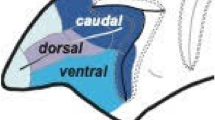Abstract.
This paper provides evidence that the ventral prefrontal cortex plays a role in the learning of tasks in which subjects must learn to associate visual cues and responses. Imaging with both positron-emission tomography (PET) and functional magnetic-resonance imaging (fMRI) reveals learning-related increases in activity when normal subjects learn visual associative tasks. Evidence is also presented from an event-related fMRI study that activity in this area is time-locked both to the presentation of the visual stimuli and also to the time of the motor response. Finally, it is shown in a study of monkeys that removal of the ventral prefrontal area 12 (including 45 A) impairs the ability of monkeys to relearn a visual associative task (visual matching), even though there were no demands on working memory. It is, therefore, proposed that the ventral prefrontal cortex constitutes part of the circuitry via which associations are formed between visual cues and the actions or choices that they specify. On the basis of the existing anatomical and electrophysiological data, it is argued that the prefrontal cortex is the only area that can represent cues, responses and outcomes.
Similar content being viewed by others
Author information
Authors and Affiliations
Additional information
Electronic Publication
Rights and permissions
About this article
Cite this article
Passingham, R., Toni, I. & Rushworth, M. Specialisation within the prefrontal cortex: the ventral prefrontal cortex and associative learning. Exp Brain Res 133, 103–113 (2000). https://doi.org/10.1007/s002210000405
Published:
Issue Date:
DOI: https://doi.org/10.1007/s002210000405




